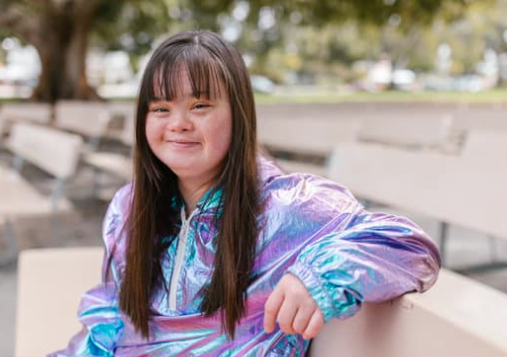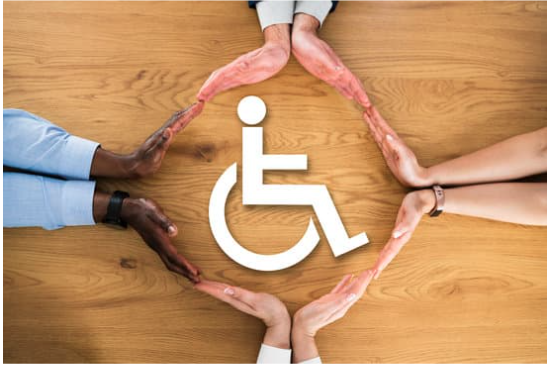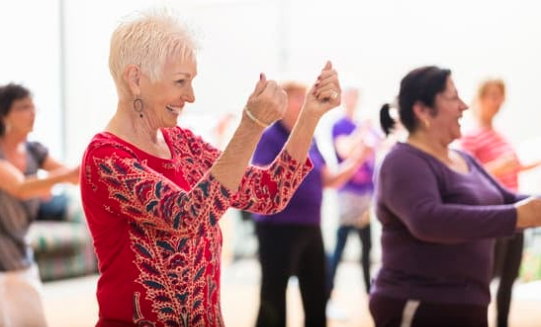Dance Therapy Benefits
Dance Therapy Benefits –
for Better Mental Health
Is dance therapy a suitable fitness therapy
for healthy AND disabled adults and children?
Dance therapy, also known as dance/movement therapy (DMT), is a type of therapy that uses movement to help individuals achieve emotional, cognitive, physical, and social integration. There are lots of Dance Therapy Benefits which we’ll outline below…
Dance Therapy is defined by the American Dance Therapy Association (ADTA) as the psychotherapeutic use of movement to promote emotional, social, cognitive, and physical integration of the individual, for the purpose of improving health and well-being. It is influenced by psychodynamic theory, Gestalt’s theory, and humanistic theory, among others. Here are some recognized Dance Therapy Benefits and other details…
It is different from other forms of rehabilitative treatments because it allows holistic creative expression, in other words it treats the full person: mind, body, and spirit.
- Dance therapy is recognized as a suitable therapy for healthy or disabled adults and children. It can be beneficial to physiotherapists to treat movement disorders like Parkinson’s
- Dance therapy works to improve the social skills, as well as relational dynamics among the clients that choose to participate in it to better improve their quality of life
- It has been effective in stimulating social interaction, enhancing mood, reducing anxiety, and increasing self-awareness in children
- Research has shown evidence for positive effects of dance participation on individuals’ health and well-being across a large spectrum of age groups and societies
- Dance therapy has been found to decrease depression and anxiety and increase quality of life and interpersonal and cognitive skills
What are the dance therapy benefits
for disabled adults and children
Dance therapy has many benefits for disabled adults and children. Here are some of the benefits of dance therapy for disabled adults and children:
- Stimulates social interaction: Dance therapy has been effective in stimulating social interaction among children with special needs
- Synchronized movements provide a shared experience and a sense of belonging
- Enhances mood: Dance therapy has been found to enhance mood and reduce anxiety in children with special needs
- It is a great way to express emotions that are sometimes not easily expressed verbally
- Increases self-awareness: Dance therapy has been found to increase self-awareness in children with special needs
- It provides a platform for children with special needs to develop and improve social skills
- It Improves physical movement and capabilities: Dancing not only improves physical movement and capabilities, it promotes overall wellness by giving individuals confidence in their abilities
- Dance therapy can be a powerful tool for improving physical fitness and gross motor skills development
- Provides stress relief: Dance therapy has been found to provide stress relief for individuals with special needs
- Moving to music is widely recognized as a powerful tool for improving wellbeing
- Dance therapy is a great way to integrate rehabilitation and physical and occupational therapy to increase participation and enjoyment
Dance therapists believe that healthy functioning
relies on integrating mind, body, and spirit
What types of disabilities can benefit from dance therapy?
How can dance therapy improve cognitive abilities in disabled individuals?
Are there any potential risks or limitations to dance therapy for disabled individuals?

How are dance therapy benefits
different from other forms of therapy?
Dance therapy is different from other forms of therapy in several ways. Here are some of the main differences:
- Relationship between client and therapist: Dance therapy is a form of psychotherapy that relies on the relationship between client and therapist. While it can be enjoyable, general therapy is not always a joyful experience
- Holistic creative expression: Dance therapy allows holistic creative expression, meaning it treats the full person: mind, body, and spirit
- It is different from other forms of rehabilitative treatments because it treats the whole person
- It improves social skills: Dance therapy works to improve the social skills, and relational dynamics among clients who choose to participate in it to improve their quality of life
- Meditative process: Through dance therapy, clients will gain a deeper sense of self-awareness through a process that involves movement and motion.
- Physical benefits: Dance therapy has physical benefits as exercise, which are well documented
- Physical activity increases special neurotransmitter substances in the brain (endorphins), which create a state of well-being.
- Different from therapeutic dance: While dancing is a therapeutic experience, therapeutic dance is not the same as dance/movement therapy
Therapeutic dance is done for leisure or pleasure, even if it is providing a mental health or behavioral component.
In summary, dance therapy is a form of psychotherapy that relies on the relationship between client and therapist. This relationship allows holistic creative expression, improves social skills, involves a meditative process, and has physical benefits. It is entirely different from therapeutic dance.
RELATED ARTICLES:
Yoga for Better Health
Low-Intensity Fitness Workouts
What qualifications are required to become a dance/movement therapist

To become a dance/movement therapist, the following qualifications are required:
- Master’s degree: The dance/movement therapy credential is awarded at the graduate level, so a Master’s degree is required
- Undergraduate degree: At the undergraduate level, there is no specific degree required, however it is a good idea to have substantial exposure to topics related to both dance and psychology
- Dance experience: To complete a graduate degree in dance movement therapy, you need at least five years of experience in some sort of dance,, this includes modern, ballet, jazz, tap, folk, or a specific type of ethnic dance
- Counselling/therapy experience: One of the requirements to become a dance/movement therapist is to have completed a master’s degree. Or you may have completed specific counselling/therapy experience
- Board certification: You must complete an ADTA Approved Graduate Program . Alternatively you can be accepted by by the Dance/Movement Therapy Certification Board, where the Registered Dance/Movement Therapist (R-DMT) credential is awarded
- Additional certifications: Movement therapists are most likely to hold a combination of certifications, including Board Certified Dance/Movement Therapist (BC-DMT), Somatic Movement Therapist (SMT), and Certified Movement Analyst (CMA)
- Volunteering/shadowing experience: It is strongly encouraged to pursue a broad practice in dance, including a variety of dance styles and techniques, choreography, performance, and teaching. Helpful experience would include working or volunteering with people in various human service settings.
In summary, to become a dance/movement therapist, you need a Master’s degree, dance experience, counselling/therapy experience, board certification, and additional certifications. It is also helpful to have volunteering/shadowing experience
What types of Disabilities can Benefit from Dance Therapy

Dance therapy can benefit individuals with various disabilities. Here are some types of disabilities that can benefit from dance therapy:
- Physical disabilities: Dance therapy can benefit individuals with physical disabilities by improving physical movement and capabilities
- It can also be integrated into rehabilitation and physical and occupational therapy to increase participation and enjoyment
- Emotional problems: Dance therapy can benefit individuals with emotional problems by giving them the ability to express emotions that are sometimes not easily expressed verbally
- It can also provide stress relief.
- Mental illness: Dance therapy can benefit individuals with mental illness by improving their social skills and relational dynamics
- It can also provide a meditative process that involves movement, motion, and realization of one’s body
- Autism: Dance therapy can benefit individuals with autism by improving their social skills and overall wellness
- Alzheimer’s: Dance therapy can benefit individuals with Alzheimer’s by improving their physical, intellectual, emotional, and motor functions of the body
- Mood disorders: Dance therapy can benefit individuals with mood disorders by improving their overall wellness and promoting confidence in their abilities
In summary, dance therapy can benefit individuals with physical disabilities, emotional problems, mental illness, autism, Alzheimer’s, and mood disorders. It can improve physical movement and capabilities, provide stress relief, improve social skills and relational dynamics, provide a meditative process, and promote overall wellness.
Can Dance Therapy Benefits Improve
Cognitive Abilities in Disabled Individuals?

Dance therapy has been found to improve cognitive abilities in disabled individuals. Here are some examples of studies and research that support this:
- Traumatized individuals with intellectual and developmental disabilities: Research has found that dance/movement therapy can improve cognitive abilities in traumatized individuals with intellectual and developmental disabilities
- Children with specific learning disability: A study found that dance therapy was an effective way to improve self-esteem, attention and concentration, and emotional recognition in children with specific learning disability
- People with intellectual disability: A scoping review found that the use of arts therapy modalities, including dance therapy, shows promise for people with intellectual disability
- Parkinson’s disease: A study found that dance therapy can improve cognition, psychological symptoms, and quality of life in individuals with Parkinson’s disease.
In summary, dance therapy has been found to improve cognitive abilities in disabled individuals. These include traumatized individuals with intellectual and developmental disabilities. It has also helped children with specific learning disability, people with intellectual disability, and individuals with Parkinson’s disease.
Are There any Potential Risks or Limitations
to Dance Therapy for Disabled Individuals

While dance therapy has many benefits for disabled individuals, there are also potential risks and limitations to consider.
Here are some of them:
Risks:
- Physical injury: Dance therapy involves physical movement. This can lead to physical injury if not done properly or if the individual has physical limitations
- Emotional distress: Dance therapy can bring up emotions that may be difficult to process, which can lead to emotional distress
Limitations:
- Lack of accessibility: Some dance therapy programs may not be accessible to individuals with certain disabilities. This could be due to physical or logistical limitations
- Lack of evidence: While there is some evidence to support the effectiveness of dance therapy for certain disabilities. However more research is needed to fully understand its potential benefits and limitations
- Lack of trained professionals: There may be a shortage of trained dance therapists. This can limit access to dance therapy for some individuals
In summary, dance therapy has potential risks of physical injury and emotional distress. It also suffers from lack of accessibility, lack of evidence, and shortage of trained professionals. It is important to consider these factors when deciding if dance therapy is suitable for a disabled individual.


